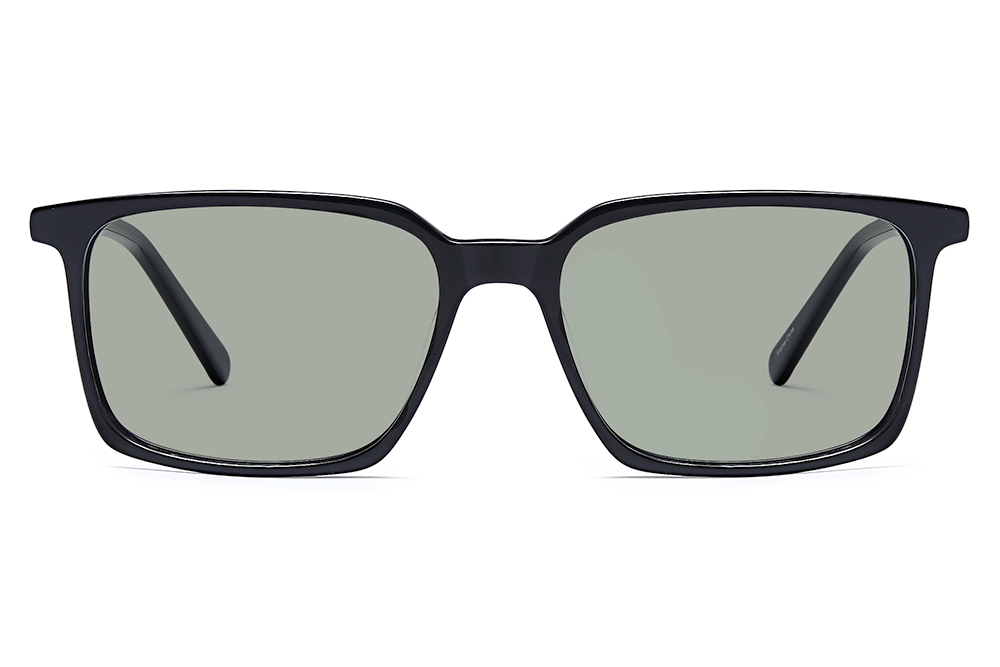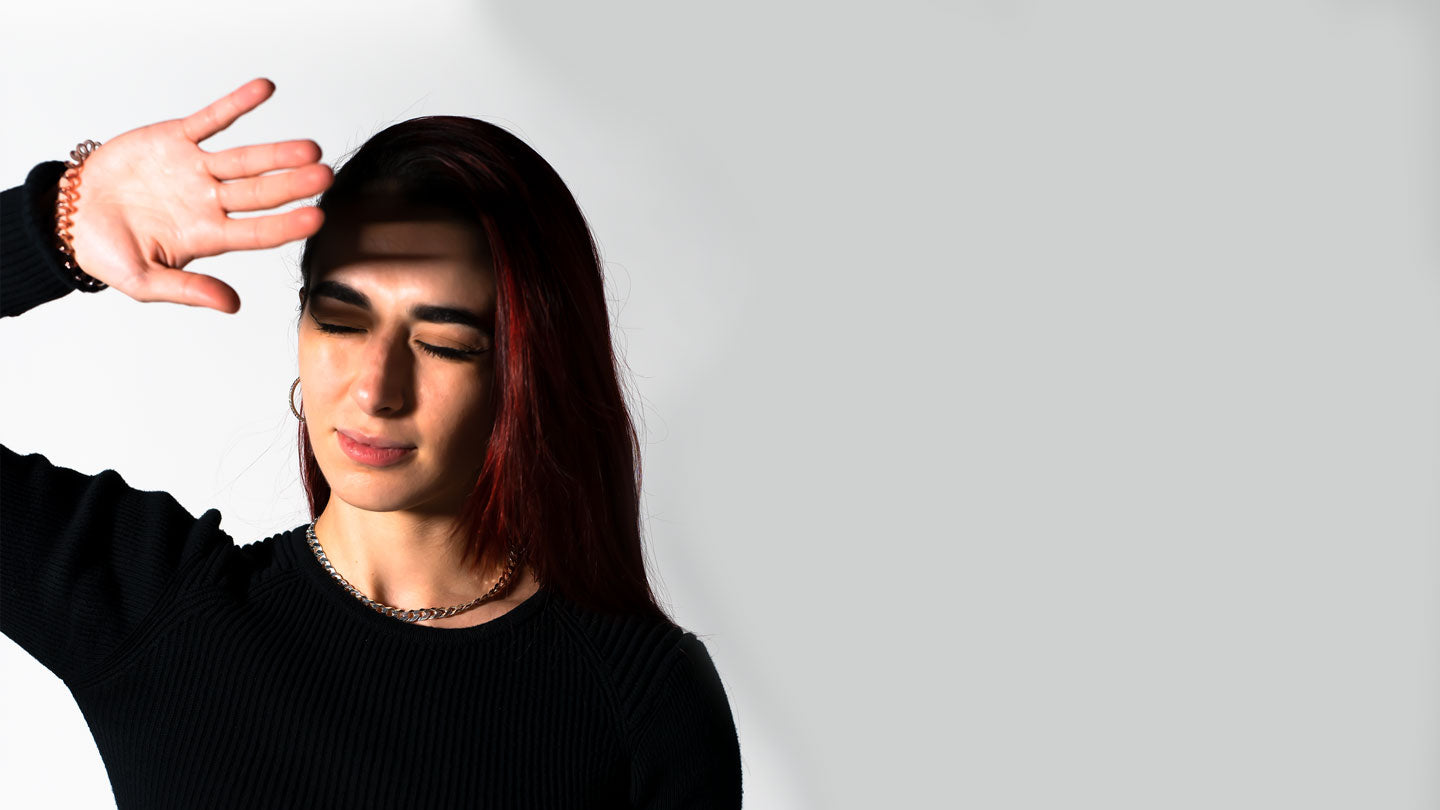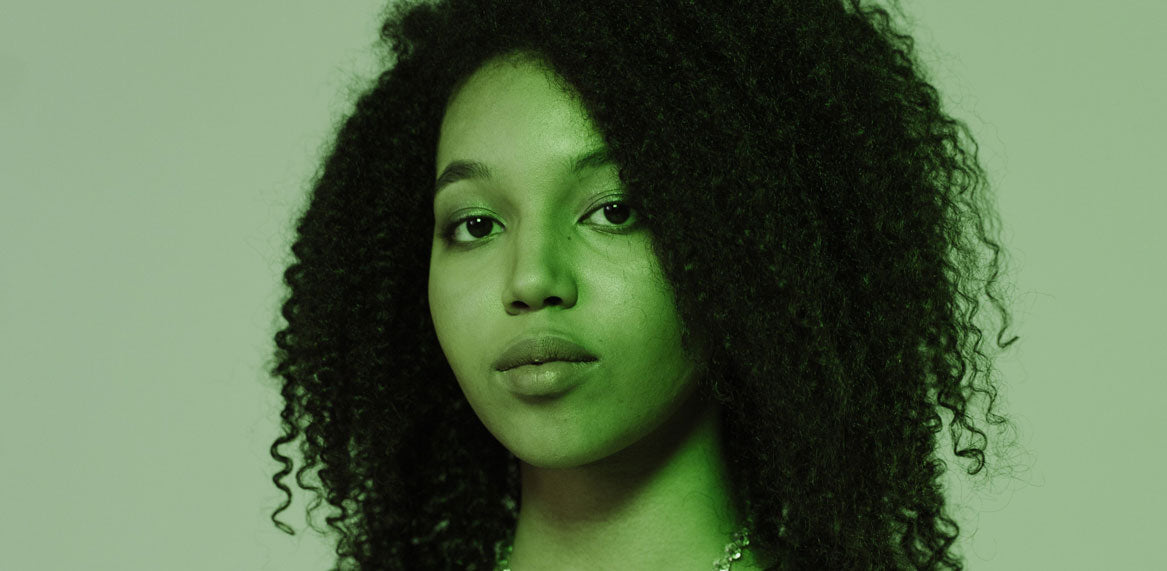Light Sensitivity and Migraine
The relationship between light sensitivity and migraine is not surprising to those who experience migraine attacks. It’s a well known fact that the first order of business for most migraineurs when a migraine attack comes on, is to seek out a dark room. In fact, physicians have known for a long time that between 80-90% of people with migraine exhibit light sensitivity, which is medically known as photophobia1. Because of this strong association, the presence of light sensitivity is actually a predictor of a migraine attack taking place2.
Light, however, has an even more powerful relationship to migraine attacks than this. When a migraine attack occurs, increasing exposure to light worsens the attack. Light being one of the key migraine triggers, up to 60% of migraine attacks are actually precipitated by light exposure3,4. Interestingly, 40% of migraineurs even have light sensitivity as the sole symptom between migraine attacks, when no headache pain is even felt5. Most importantly, however, is the debility caused by photosensitivity.
Light Sensitivity - the Most Bothersome Symptom
In 2018, the US Food and Drug Administration (FDA) urged migraine researchers to identify and address what is considered to be the most “bothersome” symptom that people with migraine have to endure when they have a migraine attack. The first major study to address this was published in 2019 and is known as the Migraine in America Symptoms and Treatment Trial (MAST). In this study, photophobia was by far and away the most bothersome symptom for those with migraine6. In this study, out of 6,045 patients, light sensitivity was judged to be their most bothersome symptom by almost double than the next bothersome symptom. Virtually, every other study since then addressing the same question yielded the same results7,8.
Patients with Photophobia Best Respond to Treatment
Another study published in 2020 actually demonstrated that patients who suffer from photosensitivity are the migraine patients who respond best to treatment8. Clearly, light sensitivity is a huge problem for those with migraine and finding a way to minimize or eliminate this issue is critical to their wellbeing and their ability to go about their normal daily lives.
New Research on How Light Increases Pain and Triggers Migraine Attacks
Fortunately, over the last 5- 10 years, there’s been heightened interest in the medical community to better understand and address this issue. Not surprisingly, the trigger for photosensitivity involves certain photoreceptor cells in an area in the back of the eye known as the retina. There are several types of these photoreceptor cells. Rods and cones are cells that are involved in the processing of light to create images. Other cells are known as intrinsically photosensitive retinal ganglion cells (ipRGC’s), specifically those secreting the photopigment melanopsin9. When ipRGCs are stimulated, they secrete melanopsin which works through various pathways in the brain to cause light sensitivity and even migraine pain.
ipRGCs – Melanopsin and its Role in Causing Pain
So, what stimulates these intrinsically photosensitive retinal ganglion cells to produce the harmful photopigment melanopsin? An excellent study performed at Harvard University put migraine subjects into a dark room and then sequentially exposed them to light at various wavelengths to ascertain their effects10. The findings essentially cemented the pathway to a light management solution for people with photophobia. Light in the blue, amber, and red spectrum all increased head pain associated with a migraine attack. Light in the low green spectrum (510-520 nm) actually soothed head pain for those subjects with migraine.
Other more recent studies showed that melanopsin cells were maximally stimulated in the upper blue and upper amber light range, so the scientific validation was complete11. There are many other causes of light sensitivity which would be expected to go through this pathway as well. Some of the commonest include other neurological causes such as cluster headaches and traumatic brain injuries including concussions. There are also optical causes including dry eye, eye inflammation, eye trauma, and light sensitivity for those who have light eye color.
How to Best Manage Light & Light Sensitivity
Given there’s a large understanding around the cause of light sensitivity, there appears to exist a clear pathway to treat it. It is not always practical, or even possible, for a person suffering an acute migraine attack to find a dark room. Life doesn’t stop, and neither do normal activities of daily living. Imagine for a moment being on a busy interstate on a bright sunny day when a migraine attack suddenly occurs, or having to complete an important project for work, staring for hours at a computer screen, or having to go pick up your children from school. Logically, the ideal form of treatment would be one that is able to block out those harmful wavelengths of light, while at the same time, allowing the beneficial wavelengths through. We'll review indoor glasses and outdoor glasses below.
Sunglasses

Most simple sunglasses block the majority of light from 380nm all the way through 650nm12. Thus, the beneficial light cannot enter the eye. More importantly, is that this blocking pattern results in a very dark lens that should not be used indoors.
Wearing dark sunglasses indoors can lead to chronic dark adaptation of the wearer’s eyes, which causes an increase in the pain and irritation associated with their light sensitivity.
Blue light glasses

Blue blockers tend to have the majority of their effect between 400nm – 460nm, thus allowing in significant light in the painful upper blue range 450nm-500nm, and painful upper amber range 550nm-600nm. Not only that, but blue blockers with clear/colorless/slightly yellow lenses just aren't filtering enough light for those with more severe photophobia.
FL-41 Glasses

FL-41 lenses are another type of blue blocker tint and they block approximately 80% of light between 480-520nm, which blocks a large amount of beneficial green light in the early 500-520nm range. They do not precisely and effectively block light in the painful amber and red ranges.
Also, because FL-41 glasses reflect light, FL-41 is more effectively worn with a wrap-around frame.
Avulux Migraine & Light Sensitivity Glasses

There is now a new lens that was engineered to precisely align with the most recent science on how light affects people with migraine and photophobia/light sensitivity. Avulux is a multiband precision optical filter, created using advanced nano-molecular technology, that specifically targets and filters the most harmful wavelengths of light.
Avulux lenses block over 80% of light at the most harmful upper blue light range from 450-500nm and up to 97% of light at the most harmful amber light range from 550nm-600nm. Most importantly, Avulux allows in over 70% of the most beneficial green light in the low end of the green color spectrum.
One would think the Avulux glasses are overly dark. They aren’t. You can see how they compare to other glasses in this table comparison here.
Avulux Clinical Studies on Subjects with Migraine
Several clinical studies run on the Avulux lens have shown that Avulux lenses provide a statistically significant improvement versus a placebo control lens in patients with episodic migraine. As expected, as Avulux clearly has the spectral profile to address the clinically identified wavelengths of light that cause discomfort.
Very importantly, because Avulux is a multi-band precision light filter (which also blocks UV rays), these lenses can be worn indoors (while in front of screens, under harsh fluorescent lighting, or other strong lighting, or general use around the house and office) or outdoors (for sunlight or glare), and have no significant color distortion, unlike other lens options that may change how you perceive color. Avulux also does not cause chronic dark adaptation, whereby the wearer experiences an increase in light sensitivity when the lenses are removed and the wearer is exposed to bright light (this increased discomfort can be caused by wearing dark tinted lenses continuously).
Conclusion
Light sensitivity has finally become recognized for the seriousness of its effects on people experiencing migraine attacks, often as the most bothersome symptom. Even more importantly, it’s often the only migraine symptom between actual periods of migraine episodes, which puts photophobia in the treatment spotlight. Fortunately, there’s been a great deal of medical research into the relationship between light sensitivity and migraine, the pathophysiological basis for light sensitivity, and the mechanism by which light sensitivity occurs. This has resulted in the development of new optical lenses that selectively filter only the most harmful light.
References:
-
Laurell L Artto V Bendsten et al Premonitory symptoms in migraine: A cross-sectional study in 2714 persons. Cephalgia 2016 Sep;36(10):951-9 https://pubmed.ncbi.nlm.nih.gov
/26643378/ -
Lipton RB, Dodick D, Sadovsky R, Kolodner K, Endicott J, Hettiarachchi J, Harrison W. A self-administered screener for migraine in primary care: The ID Migraine validation study. 2003;61:375–382. https://pubmed.ncbi.nlm.nih.gov
/12913201/ -
1997;17:733–741. Vanagaite J, Pareja JA, Storen O, White LR, Sand T, Stovner LJ. Light-induced discomfort and pain in migraine. https://pubmed.ncbi.nlm.nih.gov
/9399002/ -
Drummond PD, Woodhouse A. Painful stimulation of the forehead increases photophobia in migraine sufferers. 1993;13:321–324. https://pubmed.ncbi.nlm.nih.gov
/8242724/ -
Vincent AJ, Spierings EL, Messinger HB. A controlled study of visual symptoms and eye strain factors in chronic headache. 1989;29:523–527. https://pubmed.ncbi.nlm.nih.
gov/2793458/ - Munjal S. et al Most Bothersome Symptom in Persons With Migraine: Results From the Migraine in America Symptoms and Treatment (MAST) Study. Headache 2020 Feb: 60(2):416-29 http://pubmed.ncbi.nih.gov/7027490/
- Dodick DW, Tepper SJ, Friedman DI, Gelfand AA, Kellerman DJ, Schmidt Pc. Use of Most Bothersome Symptom as a Coprimary Endpoint in Migraine Clinical Trials: A Post-Hoc Analysis of the Pivotal ZOTRIP Randomized Control Trial. Headache 2018 Jul:58(7):986-992 https://doi.org/10.1111/head.13327/
- Lombard L, et al. A real world analysis of patient characteristics, treatment patterns, and level of impairment in patients with migraine who are insufficient responders versus responders to acute treatment. Headache. 2020 Jul-Aug 60(7):1325-39 https://pubmed.ncbi.nlm.nih.gov
/32510611/ - Abilali and Dilli Photophobia: When Light Hurts, a Review Curr Neurol Neurosci Rep 2018 Jul 30; 18(9) https://pubmed.ncbi.nlm.nih.gov
/30058044/ - Rodrigo Noseda, David Copenhagen, Rami Burstein Current understanding of photophobia, visual networks and headaches Cephalgia 2019 Nov;39(13): 1623-34 https://pubmed.ncbi.nlm.nih.gov
/29940781/ - Zele AJ et al. Melanopsin hypersensitivity dominates interictal photophobia in migraine. Cephalgia Vol 41 Issue 2, 2021 https://journals.sagepub.com/doi/abs
/10.1177/0333102420963850 - Giannis S. et al. Spectral Evaluation of Eyeglass Blocking Efficiency of Ultraviolet/High-energy Visible Blue Light for Ocular Protection Optum Vis Sci 2019 Jul 96(7): 513-22 https://www.ncbi.nlm.nih.gov
/pmc/articles/PMC6615932/













